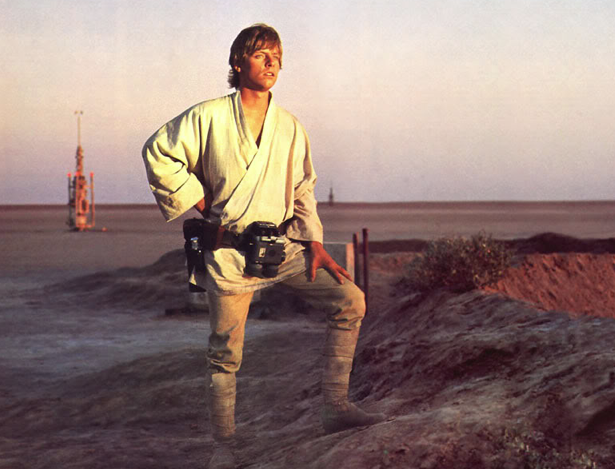The Hero’s Journey

In every round of golf, at the conclusion of the first nine holes, we have a moment before we transition to the back nine for the final stretch home. It is this point in the game which is commonly known as Making the Turn. This transition point serves as a time when we gather our thoughts and evaluate the success of our game plan. We then proceed as originally intended or revise our strategy for the remainder of play. The other characteristic I associate with Making the Turn, is in the face of pressure, this transition serves as a gut check to see if we have the courage to finish strong on our way to victory. Anyone who is familiar with Major Championship golf surely knows how you finish is really what counts. In fact, in the Masters tournament each year we are constantly reminded the tournament, “Begins on the back nine Sunday!” To me, to make the turn is to ask ourselves, “Do we have what it takes to turn something ordinary into something extraordinary? Can we finish what we started and make this dream a reality?” In a Major Championship setting like the Masters, the answer for most is a crushing “No,” as only one Green Jacket is given and no matter how hard the other competitors have fought, no one remembers second place.
It is funny how we often hear the saying “Golf is the ultimate metaphor for life;” but even as a coach I forget how literal the connection can be at times. Every human being, whether in sport or life, is faced with an unlimited number of transitions. We grow on the front nine, full of excitement and fervor. However, it is only on the back nine where we mature and eventually find our way.
Greek mythology addresses this idea of transition in the form of the Hero’s Journey, where a young individual is presented with a challenge which is bested against all odds. In Joseph Campbell’s book “Hero with a Thousand Faces,” Campbell outlines this story commonly told throughout the history of mankind. In our modern world we embraced the idea of the Hero’s Journey through a character like Luke Skywalker in Star Wars. A tale of how a young man with a special gift transitions from farm boy to galactic savior.
A closer look at the Hero’s Journey reminds us how nearly every great success involves the help of a mentor to guide us on our way. In time, the mentor must pass to allow us to stand on our own, an often sad but necessary rite of passage congruent with nature.
In golf, I can’t help but compare this familiar characteristic of the Hero’s Journey to the relationships between Tiger Woods and his Father Earl, Jack Nicklaus and his mentor Jack Grout, or even Ben Crenshaw and the great Harvey Penick. Isn’t it really the same story we see? Maybe the universe is designed to have us revel in the idea and beauty of the transition from neophyte to expert. I guess this is why we have been telling and rooting for the same story since the beginning of time.
The journey can seem long and hard. It usually begins with clarity, but always seems to be muddled by indecision at some point. Always there is an obstacle to be bested. It is such a predictable course of events, I wonder if we are even meant to enjoy success from start to finish. After all, how else would we be able to define a person’s character?
I believe we are all on the Hero’s Journey, maybe on varying levels to the world around us, but individually all striving for the same feeling of success and deliverance to our destiny whatever it may be. This journey we are all on is really just the way of the universe. Without it, we would have no reason to get up in the morning.
There is an ancient text called the Tao Te Ching which roughly translates as “The Great Way.” What the Tao offered to me is the idea of how the universe is rooted in paradox. You may know of the common Chinese symbols of Yin and Yang which work in direct opposition to each other to offer the completion of the whole. In golf and in life these paradoxes teach us to be strong, something else must be weak, confidence relies on uncertainty and success depends on defeat. The lesson is that one cannot exist without the other. The person or athlete who sees these ideas as universal truths can proceed in sport or life without fearing the opposition to their desires. This is an integral part of weathering and embracing transitions.
William Shakespeare said, “Nothing is neither good nor bad but thinking makes it so.” My buddy Chris from New Jersey paraphrased this by saying, “Hey, it ain’t bad….it just is.” Either way, our perception of what universally “just is” determines how well we deal with things when we don’t get what we want. That is, what ends up hurting us, or how well we deal with disappointment when our dream doesn’t pan out exactly as we had intended.
Do we have to have our entire lives planned perfectly in order to feel safe and secure? Once we set the plan in motion, do we have to suffer under the idea of “pain equals gain” if we hit a fork in the road just to prove something to ourselves? Remember, human beings are at their best when they feel their best. There is no need to press and push against something which isn’t right just to make it fit neatly into our original intentions.
Every person will find a greater level of success and happiness if they have a plan in mind. A dream, like the North Star which keeps us focused on what our heart’s desire. During this process we must also realize dreams take time and time is a harbinger of change. What we set out to achieve today may become different in the future. We need to have the mental flexibility going in to understand this is entirely natural and should be embraced as so. It is this attitude which will allow our transitions to occur effortlessly and seamlessly leading us to our destiny. It is this way of thinking which also allows us to not put too much importance on any one decision we make. When we feel pressure, our decisions are often accompanied by indecision or fear which ultimately restricts us from enjoying the ride at all.
Dreamers are what make the world an interesting place. If you are born with the propensity to dream, begin to develop an awareness of when you find yourself entering a transition. This is where you will look to continue your path or consider revising your map.
In a round of golf it may be adjusting your original game plan to suit the situation. Conservative may to turn to aggressive. Make it happen may be better realized by let it happen. Finding your best score may be a result of putting the driver away in exchange for the three wood. This may not be how you intended to play out of the gate, but in the end you must allow for flexibility in your plan to change what is not working. After all, it has often been said; “There is a fine line between stubborn and stupid!”
The Tao again teaches us an important lesson in flexibility by making comparisons to life and nature. It asks us to experience flexibility in action, by viewing the resilient nature of the palm tree. The palm can withstand the highest of hurricane winds nearly bending to the turf, whereas less flexible trees snap under the same conditions. These ideas of being able to revise your map and have flexibility in your transition are the basic cornerstones to living a happy life. Dream big, embrace the hero within and always remember, in golf and life, flexibility is among your greatest assets.
For more information on JRG and Make The Turn Click Here.








